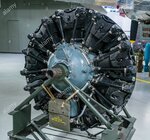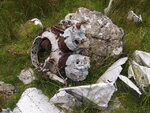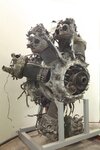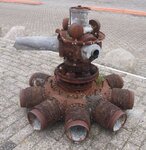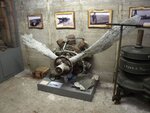Looking at US types of the period the Dauntless was fitted with a Cyclone and a counterweight prop for reference; Modeling Hamilton Standard Counterweight Propeller
A Wright Cyclone has a circular crankcase and pushrod tubes in front of each cylinder. The cylinder barrels are also much shorter than on the engine Marcel has posted which has an angular crankcase very much like the photo in post #17 though the crankcase bolts are smaller and not counter-sunk.

